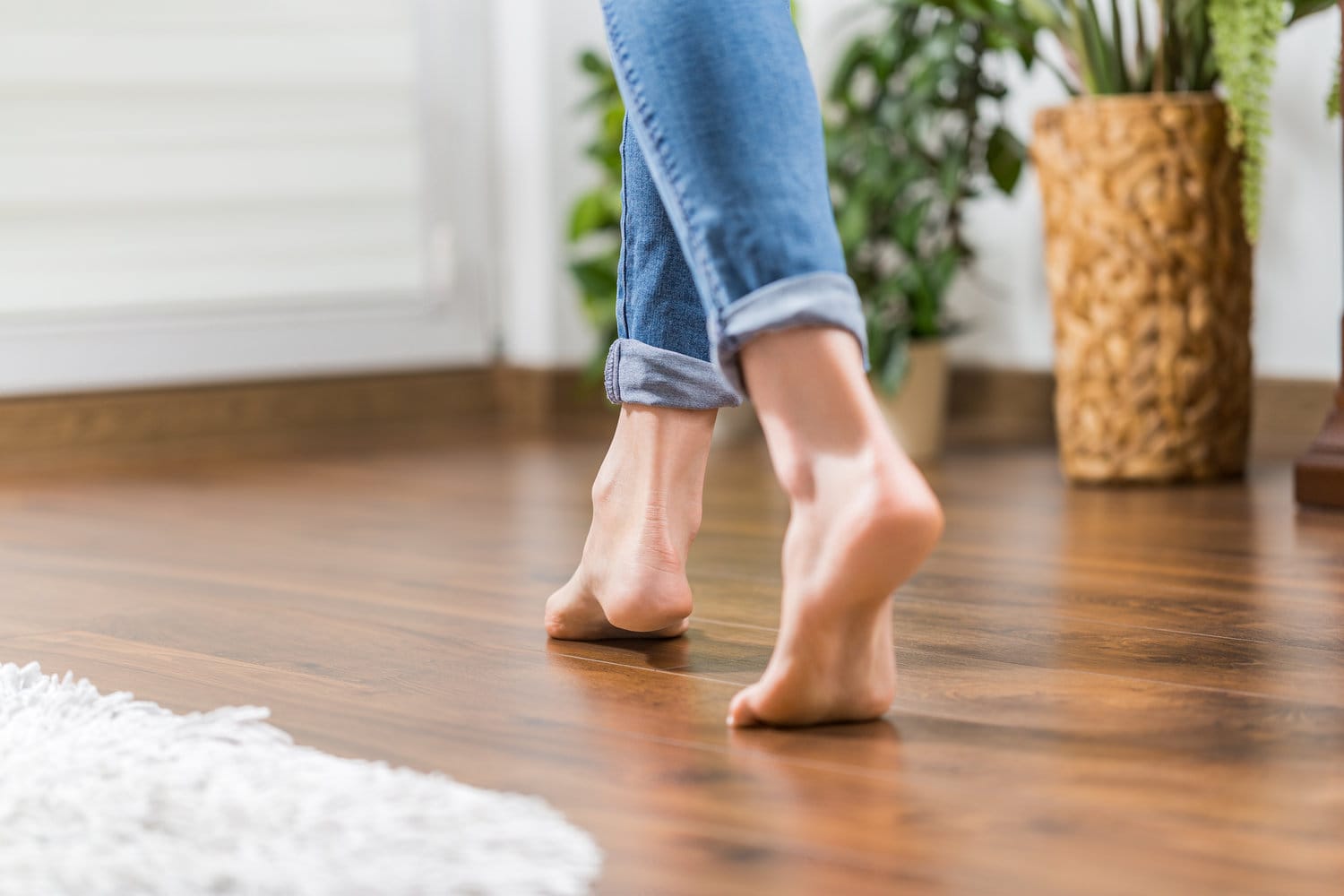

Articles
How To Keep Floor Warm In Winter
Modified: October 18, 2024
Discover effective ways to keep your floor warm during the winter with these informative articles. Learn how to maintain a cozy and comfortable home environment.
(Many of the links in this article redirect to a specific reviewed product. Your purchase of these products through affiliate links helps to generate commission for Storables.com, at no extra cost. Learn more)
Introduction
When winter arrives, it brings with it chilly temperatures that can make your floors feel like ice. Stepping out of bed in the morning or walking barefoot across the room becomes a daunting experience. However, there are several strategies you can employ to keep your floors warm and cozy all winter long.
In this article, we will explore various methods to effectively combat the winter cold and ensure that your floors stay comfortably warm. Whether you’re looking for cost-effective solutions or considering a more long-term investment, we’ve got you covered. Let’s dive into the world of floor insulation and heating options.
Key Takeaways:
- Combat the winter chill by insulating floors, sealing drafts, using rugs, and exploring heating options like radiant floor heating or portable heaters. Maintain warmth through proper ventilation and regular cleaning for a cozy home environment.
- Keep floors warm in winter by understanding the causes of cold floors, insulating effectively, utilizing rugs and carpets, and exploring various heating options. Maintain warmth through proper ventilation and regular cleaning for a cozy home environment.
Read more: How To Keep A Sunroom Warm In Winter
Understanding the Problem
Before diving into the solutions, it’s important to understand why your floors feel cold during the winter months. One of the primary reasons is the lack of insulation. Many homes have insufficient insulation in the floor, allowing cold air from below to seep through, making the floors feel cold to the touch.
In addition to insufficient insulation, drafts and gaps in doors, windows, and floorboards can result in cold air entering your home and cool air escaping. This not only makes your floors feel colder, but it also leads to increased energy consumption as you try to compensate for the heat loss.
Now that we understand the underlying causes, let’s explore some effective solutions to keep your floors warm and combat the winter chill.
Insulation Options
Improving insulation is crucial when it comes to keeping your floors warm in winter. Fortunately, there are several insulation options available to effectively minimize heat loss and keep the cold air at bay.
One popular option is to use foam board insulation. This type of insulation is lightweight and easily installed underneath your floor. It creates a barrier that prevents heat from escaping and cold air from entering your living space.
Another effective insulation option is fiberglass batt insulation. These insulation panels consist of tightly woven fibers that trap air and provide excellent insulation properties. They can be placed between floor joists to ensure warmth and minimize heat loss.
If you have a crawl space beneath your floor, consider insulating it with spray foam insulation. This type of insulation expands to fill gaps and cracks, forming a highly effective and energy-efficient barrier against the cold.
For those looking for a greener and more sustainable option, natural fiber insulation, such as wool or cellulose, can be a great choice. These materials are environmentally friendly and provide excellent thermal insulation properties.
When selecting insulation options, it’s important to consider factors such as the climate in your area, budget, and the specific needs of your home. Consulting with a professional can help you make an informed decision and ensure that you choose the most suitable insulation option for your floors.
Sealing Drafts
One of the major culprits behind cold floors in winter is the infiltration of cold air through drafts and gaps in doors, windows, and floorboards. Sealing these drafts is a cost-effective way to keep your floors warmer and improve energy efficiency in your home.
One effective method to seal drafts is by using weatherstripping. This material is designed to create a seal around doors and windows, preventing cold air from entering and warm air from escaping. Weatherstripping comes in various forms, such as adhesive strips or door sweeps, and can be easily installed by homeowners.
Another area to focus on when sealing drafts is the floorboards. Gaps between floorboards can allow cold air to rise through the floor, resulting in chilly floors. Using caulk or sealant, fill in these gaps to create a tight seal and prevent air leakage.
Don’t forget to check for drafts around electrical outlets and light switches on the floor. These areas are often overlooked but can be a significant source of air leakage. Install foam gaskets behind outlet and switch plates to create a barrier against drafts.
For larger gaps around windows and doors, consider using door snakes or draft stoppers. These long fabric tubes can be placed along the base of doors or windows to block drafts and keep cold air out. They are especially useful in older homes where gaps may be more pronounced.
By taking the time to seal drafts in your home, you can significantly reduce heat loss and keep your floors warmer during winter. Not only will this improve comfort, but it will also save you money on heating bills.
Using Rugs and Carpets
Another effective and aesthetically pleasing way to keep your floors warm in winter is by using rugs and carpets. These floor coverings not only provide insulation but also add a touch of warmth and coziness to your living space.
When choosing rugs or carpets for your floors, opt for materials that have good insulating properties, such as wool or thick synthetic fibers. These materials help to trap heat and prevent it from being conducted away from your feet.
Place rugs strategically in areas where you spend the most time, such as living rooms, bedrooms, or even kitchens. By covering the floor with rugs, you create a barrier between your feet and the cold floor surface, allowing you to walk comfortably and keep your feet warm.
In addition to adding warmth, rugs and carpets also act as a sound insulator, reducing noise levels and creating a more peaceful and comfortable environment in your home. They can also help to protect your floors from wear and tear, increasing their longevity.
When selecting rugs or carpets, consider their size. Larger rugs can cover a larger area of the floor, providing more insulation and warmth. However, make sure that the rug does not obstruct heating vents or radiators, as this can impede the efficiency of your heating system.
Lastly, don’t forget to regularly clean and maintain your rugs and carpets. Vacuuming them regularly helps to remove dust and dirt that can accumulate and reduce their insulating properties. If spills occur, clean them up promptly to prevent any moisture damage to the underlying flooring.
By incorporating rugs and carpets into your home’s decor, you can not only keep your floors warmer but also enhance the overall comfort and ambiance of your living spaces during the winter months.
Read more: How To Keep An Attic Warm In Winter
Heating Options
When it comes to keeping your floors warm in winter, there are various heating options to choose from. Each option has its own advantages and considerations, allowing you to find the best fit for your home and preferences.
Radiant Floor Heating: Radiant floor heating is a luxurious and efficient way to warm up your floors. This system involves installing heating elements, such as electric cables or water-filled pipes, within the floor. These elements radiate heat upward, providing even and consistent warmth throughout the room. Radiant floor heating can be installed in new constructions or added to existing floors, depending on the type of system chosen.
Thermal Underlay: Thermal underlay is an excellent option for those who already have carpeted floors or are looking for a cost-effective solution. This underlay is installed beneath the carpet and acts as an additional layer of insulation. It helps to trap heat between the floor and carpet, keeping your feet comfortable and the room warmer.
Portable Heaters: If you’re looking for a more flexible and budget-friendly option, portable heaters can be a good choice. There are various types of portable heaters available, including electric heaters, space heaters, and oil-filled radiators. These heaters can be easily moved around and placed near or under your desk, bed, or sitting area, providing localized heat and keeping your immediate surrounding warm.
While portable heaters are convenient, it’s important to follow safety guidelines and manufacturer’s instructions to prevent accidents or fire hazards. Remember to always turn off portable heaters when not in use or when you leave the room.
Combining different heating options can also be effective. For example, using radiant floor heating as the primary source of warmth and supplementing it with portable heaters in specific areas can provide a well-rounded and customizable heating solution.
Remember to compare the energy efficiency, installation requirements, and costs associated with each heating option before making a decision. Consulting with professionals can help you understand the pros and cons of each system and ensure that you choose the most suitable option for your home.
Radiant Floor Heating
Radiant floor heating is a popular and luxurious option for keeping your floors warm in winter. This heating system involves installing electric cables or water-filled pipes beneath the floor surface, which radiate heat upwards to provide consistent warmth throughout the room.
There are two main types of radiant floor heating systems: electric and hydronic.
Electric Radiant Floor Heating: Electric radiant floor heating involves placing electric heating cables, mats, or films directly beneath the flooring. These heating elements warm up as electricity passes through them, radiating heat evenly across the floor surface. Electric radiant systems are easy to install, especially in retrofit projects, and they can be controlled by a thermostat for precise temperature regulation.
Hydronic Radiant Floor Heating: Hydronic radiant floor heating utilizes a network of water-filled pipes that are typically made of PEX (cross-linked polyethylene). These pipes circulate hot water from a boiler or water heater, providing gentle, consistent heat to the floors. Hydronic systems are known for their energy efficiency and even heat distribution. They are commonly used in new construction or major renovations and require professional installation.
Radiant floor heating offers several advantages. First, it provides a luxurious and comfortable heating experience. With radiant heating, your floors are warm to the touch, eliminating the discomfort of stepping on cold surfaces. Second, radiant floor heating is highly efficient, as the heat radiates upward, warming the entire room from the ground up. This can lead to energy savings compared to traditional forced-air heating systems.
It’s important to note that radiant floor heating may not be suitable for all homes. Factors such as the type of flooring, insulation, and existing heating systems should be taken into consideration. It’s recommended to consult with a professional installer to assess the feasibility of radiant floor heating for your specific circumstances.
Installing radiant floor heating requires careful planning and attention to detail. It is a project that is best left to professionals who have experience in designing and implementing these systems. They can ensure proper installation and wiring, provide advice on choosing the right system for your space, and help with maintenance and troubleshooting in the future.
Overall, radiant floor heating is a luxurious and efficient solution for keeping your floors warm in winter. Whether you opt for electric or hydronic systems, it can transform your living spaces into cozy and comfortable retreats during the colder months.
Use area rugs to insulate and warm up cold floors in winter. The rugs act as a barrier between the cold floor and your feet, helping to retain heat and make the room feel cozier.
Thermal Underlay
Thermal underlay is an effective and affordable solution for keeping your floors warm in winter, particularly if you already have carpeted floors. This additional layer of insulation is installed beneath the carpet and provides an extra barrier against the cold.
Thermal underlay works by trapping heat between the subfloor and the carpet, preventing it from being conducted away and keeping your feet warm. It also helps to reduce noise transmission between floors and provides a cushioning effect, improving comfort underfoot.
There are various types of thermal underlay available, each with its own insulation properties and features. They can be made from materials such as rubber, foam, or felt, and their thickness and density impact their insulating capabilities.
When selecting thermal underlay, consider the R-value, which measures its thermal resistance. A higher R-value indicates a better insulating performance. Additionally, the underlay should have good moisture resistance to prevent mold or mildew growth.
Installing thermal underlay is a straightforward process that can be done by homeowners. Start by thoroughly cleaning the subfloor to ensure a smooth and dust-free surface. Roll out the underlay across the floor, ensuring it covers the entire area. Trim any excess material and secure the underlay in place with adhesive strips or staples.
Once the underlay is installed, lay the carpet over it, ensuring a tight and secure fit. It’s important to follow the manufacturer’s instructions and any specific guidelines for your particular type of carpet and underlay.
Thermal underlay is a cost-effective way to enhance the insulation properties of your carpeted floors. It not only keeps your feet warm but also improves energy efficiency by reducing heat loss through the floor. This can result in lower heating expenses during the winter months.
Remember to maintain your underlay by regularly vacuuming your carpets to remove dust and debris that can accumulate over time. If any spills occur, clean them up promptly to prevent moisture from seeping into the underlay and causing damage.
By adding thermal underlay to your carpeted floors, you can create a cozy and warm environment in your home during the winter season, making it a comfortable retreat from the cold outside.
Portable Heaters
Portable heaters are a versatile and convenient option for keeping your floors warm in winter. They offer flexibility in terms of placement, allowing you to bring warmth to specific areas of your home as needed. There are a variety of portable heaters available, each with its own features and benefits.
Electric Heaters: Electric heaters are a popular choice when it comes to portable heating options. They are easy to operate and provide quick and efficient heat. Electric heaters come in different sizes and styles, including fan-forced heaters, ceramic heaters, and radiant heaters. These heaters are ideal for providing instant warmth to small to medium-sized rooms.
Space Heaters: Space heaters are designed to heat a specific area or “zone” within a room. They are compact, portable, and provide localized heat. Space heaters can be particularly useful if you spend a lot of time in a specific area, such as a home office or living room. They come in different types, such as convection heaters, radiant heaters, and oil-filled heaters.
Oil-Filled Radiators: Oil-filled radiators are a type of electric heater that provides a slow and steady heat. They are filled with a special oil that heats up and radiates warmth into the surrounding area. Oil-filled radiators are known for their energy efficiency and ability to maintain heat even after being turned off.
When using portable heaters, it’s important to follow safety guidelines to prevent accidents and ensure proper operation. Keep heaters away from flammable materials, don’t leave them unattended, and make sure they are placed on a stable surface.
It’s worth noting that portable heaters should not be used as a primary source of heating for an entire home, as they may not have the capacity to adequately warm larger spaces or multiple rooms. They are best suited for supplemental heating in specific areas.
Additionally, consider the energy consumption and efficiency of the portable heater you choose. Look for heaters with adjustable thermostats and energy-saving features to maintain comfortable temperatures while minimizing energy usage.
Remember to turn off portable heaters when they are no longer needed or when you leave the room. It’s important to prioritize safety and ensure that heaters are used responsibly to prevent overheating or electrical hazards.
By utilizing portable heaters strategically, you can provide targeted warmth to your floors and create a cozy and comfortable environment in your home during the colder months.
Read more: How To Keep Balcony Warm In Winter
Maintaining Warmth
Once you’ve implemented measures to keep your floors warm in winter, it’s important to maintain their warmth and maximize their efficiency. By following some simple tips and guidelines, you can ensure that your floors stay cozy throughout the season.
Proper Ventilation: Good ventilation is essential for maintaining warmth and preventing excess moisture buildup. Make sure that your home has proper ventilation, especially in areas like bathrooms and kitchens where moisture tends to accumulate. Ventilation helps to regulate humidity levels and prevent condensation, which can make your floors feel colder.
Regular Cleaning and Maintenance: Keeping your floors clean and well-maintained is key to maintaining warmth. Regularly vacuum or sweep the floors to remove dust, dirt, and debris that can trap cold air and reduce the insulating properties of carpets and rugs. Additionally, clean up any spills promptly to prevent moisture from seeping into the flooring material.
Check for Drafts: Periodically check for drafts and air leaks around windows, doors, and floorboards. Use weatherstripping, caulk, or draft stoppers to seal any gaps and prevent cold air from infiltrating your home. A well-sealed environment will help maintain the warmth of your floors and reduce energy consumption.
Utilize Curtains and Window Coverings: Use curtains or window coverings to your advantage. Open them during the day to allow sunlight to naturally warm your floors, and close them at night to minimize heat loss through windows. Thermal curtains or blinds can provide additional insulation and help to maintain a cozy atmosphere.
Monitor Thermostat Settings: Check your thermostat settings to ensure that your heating system is operating at an appropriate temperature. Aim for a comfortable and energy-efficient temperature setting that keeps your floors warm without overheating the entire room.
Utilize Ceiling Fans: Ceiling fans can help distribute warm air throughout the room. Set your fan to rotate in reverse (clockwise) during the winter months to push warm air down from the ceiling and circulate it around the space. This can help eliminate cold spots and maintain an even temperature across your floors.
By practicing good maintenance habits and implementing these strategies, you can ensure that the warmth of your floors is effectively maintained, creating a comfortable and cozy environment for your home during the winter season.
Proper Ventilation
Proper ventilation is an essential aspect of maintaining warmth in your home during winter. It not only helps to preserve the comfort of your floors but also ensures a healthy and pleasant indoor environment. Here are some key considerations for achieving proper ventilation:
Adequate Airflow: Good airflow is essential for preventing stagnant air and maintaining a comfortable temperature throughout your home. Ensure that your HVAC system is functioning correctly and that air vents and registers are unobstructed. This allows warm air to circulate effectively and prevents cold spots in your living spaces.
Bathroom and Kitchen Ventilation: Bathrooms and kitchens are areas prone to excess moisture, which can lead to a damp and uncomfortable atmosphere. Proper ventilation is crucial in these spaces to remove moisture and prevent condensation, which can make your floors feel colder. Install exhaust fans or range hoods to effectively vent out steam and cooking odors.
Open Windows Strategically: On days when the outside temperature is warmer, take advantage of natural ventilation by opening windows strategically. This allows fresh air to enter your home and helps regulate humidity levels. Opening windows on opposite sides of a room creates cross-ventilation, improving airflow and maintaining a comfortable indoor environment.
Invest in Ventilation Systems: In cases where natural ventilation is limited or not feasible, consider investing in mechanical ventilation systems such as heat recovery ventilation (HRV) or energy recovery ventilation (ERV). These systems help to exchange stale indoor air with fresh outdoor air while recovering heat or energy from the outgoing air, ensuring efficient ventilation without significant heat loss.
Maintain Air Ducts: Regularly inspect and clean air ducts to remove dust, dirt, and debris. A buildup of contaminants in air ducts can hinder proper airflow and reduce the effectiveness of your heating system. Hire a professional to perform duct cleaning as needed to keep the air flowing smoothly.
Balance Humidity Levels: Maintaining appropriate humidity levels in your home is crucial for both comfort and the health of your floors and furniture. Use a humidifier in dry winter months to add moisture to the air and prevent excessive drying out, which can cause shrinking and warping of flooring materials.
By ensuring proper ventilation in your home, you create a comfortable, healthy, and energetically efficient environment. This helps to maintain the warmth of your floors and prevents the buildup of moisture or condensation, keeping your living spaces cozy throughout the winter season.
Regular Cleaning and Maintenance
Regular cleaning and maintenance are essential for keeping your floors warm and well-maintained during the winter months. By incorporating these practices into your routine, you can prevent dirt buildup, maintain insulation, and ensure the longevity of your flooring. Here are some key steps to follow:
Vacuum or Sweep Regularly: Regularly vacuum or sweep your floors to remove dust, dirt, and debris that can accumulate over time. These particles can act as insulators and prevent your floors from effectively absorbing and retaining heat. Use a vacuum cleaner or broom suitable for your specific flooring type to prevent any damage.
Spot Clean Spills Promptly: Accidents happen, and spills are unavoidable at times. However, it’s important to clean up spills promptly to prevent moisture from seeping into your floors. Moisture can not only make your floors feel colder but can also lead to staining, warping, or other damage. Use appropriate cleaning methods and products for your flooring type to effectively remove spills.
Mop with Care: If your flooring allows moisture, such as tile or vinyl, regular mopping is necessary for cleaning and maintenance. However, ensure that you use the right cleaning solution and mop technique recommended for your specific flooring material. Excessive moisture or using harsh chemicals can damage your floors and affect their insulating properties.
Protect Floors from Scratches: Scratches and abrasions can compromise the integrity of your floors, allowing cold air to penetrate. Place floor protectors or felt pads on furniture legs to prevent scratches when moving furniture. Use rugs or mats in high-traffic areas to minimize wear and tear on your floors.
Inspect and Repair Damaged Areas: Regularly inspect your floors for any signs of damage, such as cracks, loose tiles, or gaps in floorboards. These issues can diminish the insulating qualities of your floors and allow cold air to seep through. Address any repairs promptly to maintain the warmth and integrity of your flooring.
Consider Professional Cleaning and Maintenance: For certain flooring types, such as carpets or hardwood, professional cleaning and maintenance may be necessary. Schedule regular deep cleaning sessions or refinishing treatments as recommended by the manufacturer or flooring professional. This will help to rejuvenate your floors, remove deep-seated dirt, and improve their insulating properties.
By incorporating regular cleaning and maintenance into your floor care routine, you can ensure that your floors remain warm, inviting, and well-protected during the winter season. Not only will this contribute to the coziness of your living spaces, but it will also extend the lifespan of your flooring investments.
Conclusion
Keeping your floors warm in winter is essential for creating a comfortable and cozy living environment. By implementing the strategies discussed in this article, you can effectively combat the cold and enjoy toasty floors throughout the winter season.
Understanding the underlying causes of cold floors, such as inadequate insulation and drafts, is the first step towards finding solutions. Insulating your floors and sealing drafts are crucial measures that help to minimize heat loss and keep cold air at bay. Whether it’s adding foam board insulation, using weatherstripping, or filling gaps in floorboards, these steps are key to maintaining warmth.
Rugs and carpets are not only decorative elements but also beneficial for insulation. They provide an extra layer of warmth, trap heat, and improve energy efficiency. Choosing the right materials and placing rugs strategically in high-traffic areas can significantly contribute to the overall warmth of your floors.
Exploring heating options, such as radiant floor heating or portable heaters, offers flexibility and supplemental warmth. Radiant floor heating provides luxurious warmth from below, while portable heaters offer convenience and targeted heating for specific areas.
To maintain warmth, proper ventilation, regular cleaning, and maintenance are crucial. Adequate airflow, along with controlling humidity levels, helps to preserve warmth and prevent moisture buildup. Regular cleaning and prompt spill cleanup are important for maximizing insulation properties and preventing damage to your floors.
In conclusion, taking a holistic approach to keeping your floors warm in winter involves a combination of insulation, sealing drafts, utilizing rugs and carpets, choosing appropriate heating options, and maintaining cleanliness and ventilation. By implementing these strategies, you can ensure a warm and inviting atmosphere in your home, even during the coldest months of the year.
Frequently Asked Questions about How To Keep Floor Warm In Winter
Was this page helpful?
At Storables.com, we guarantee accurate and reliable information. Our content, validated by Expert Board Contributors, is crafted following stringent Editorial Policies. We're committed to providing you with well-researched, expert-backed insights for all your informational needs.
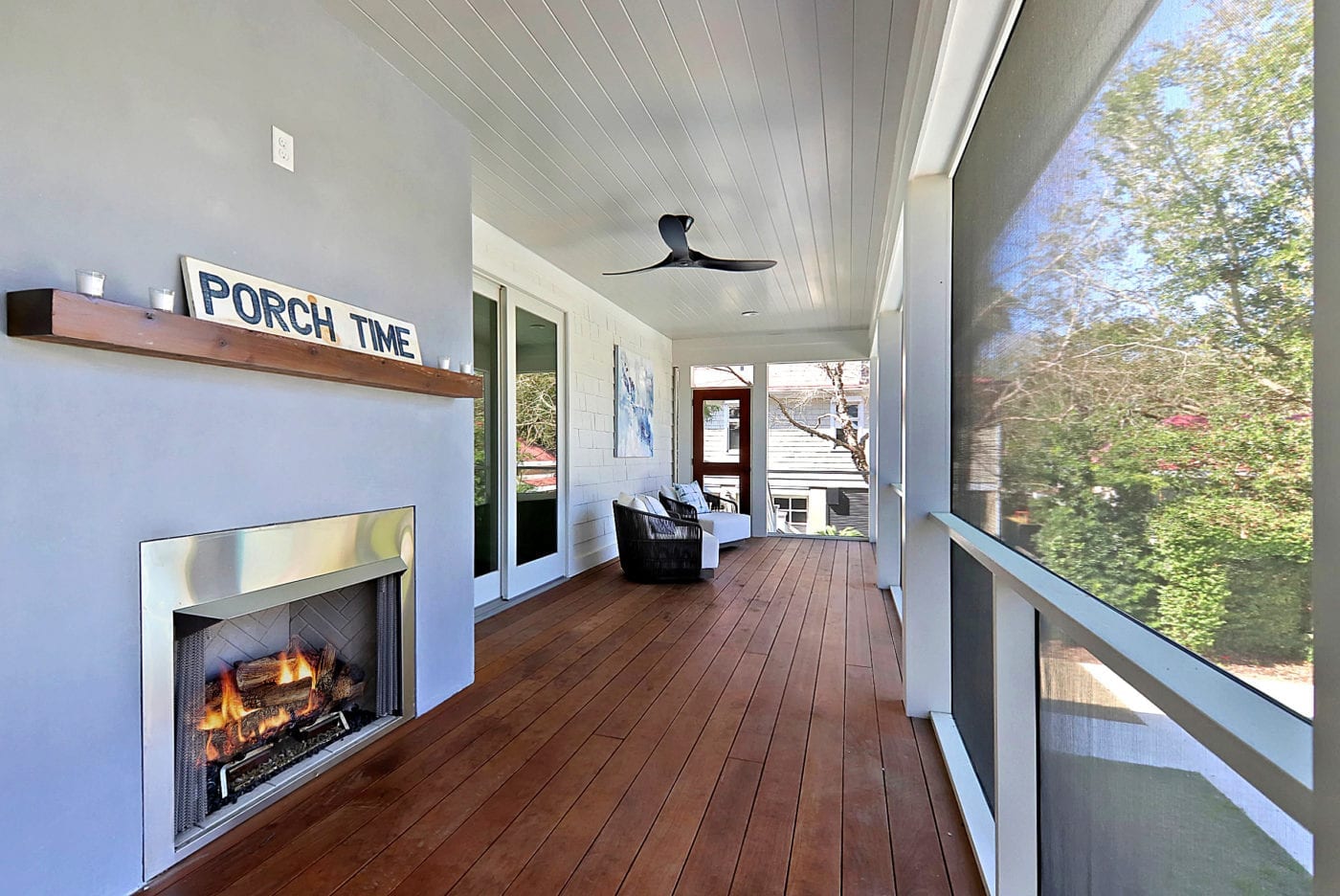
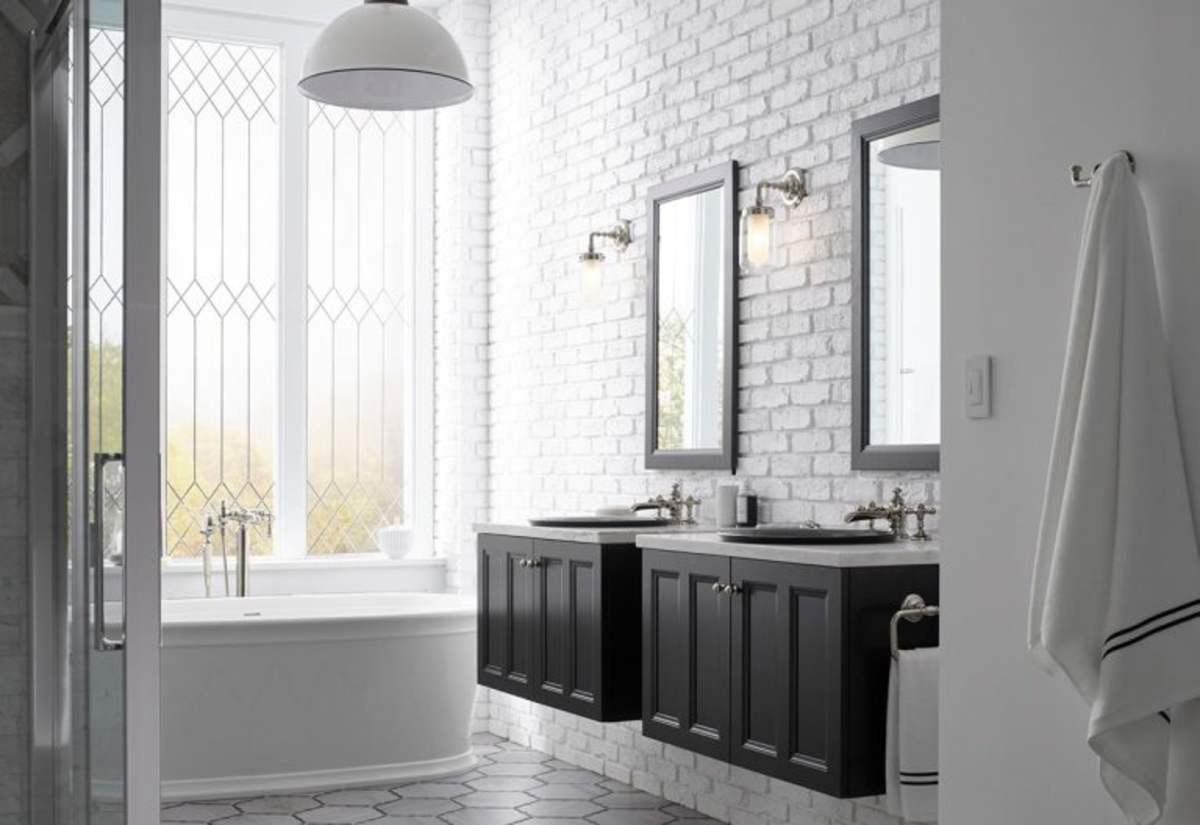


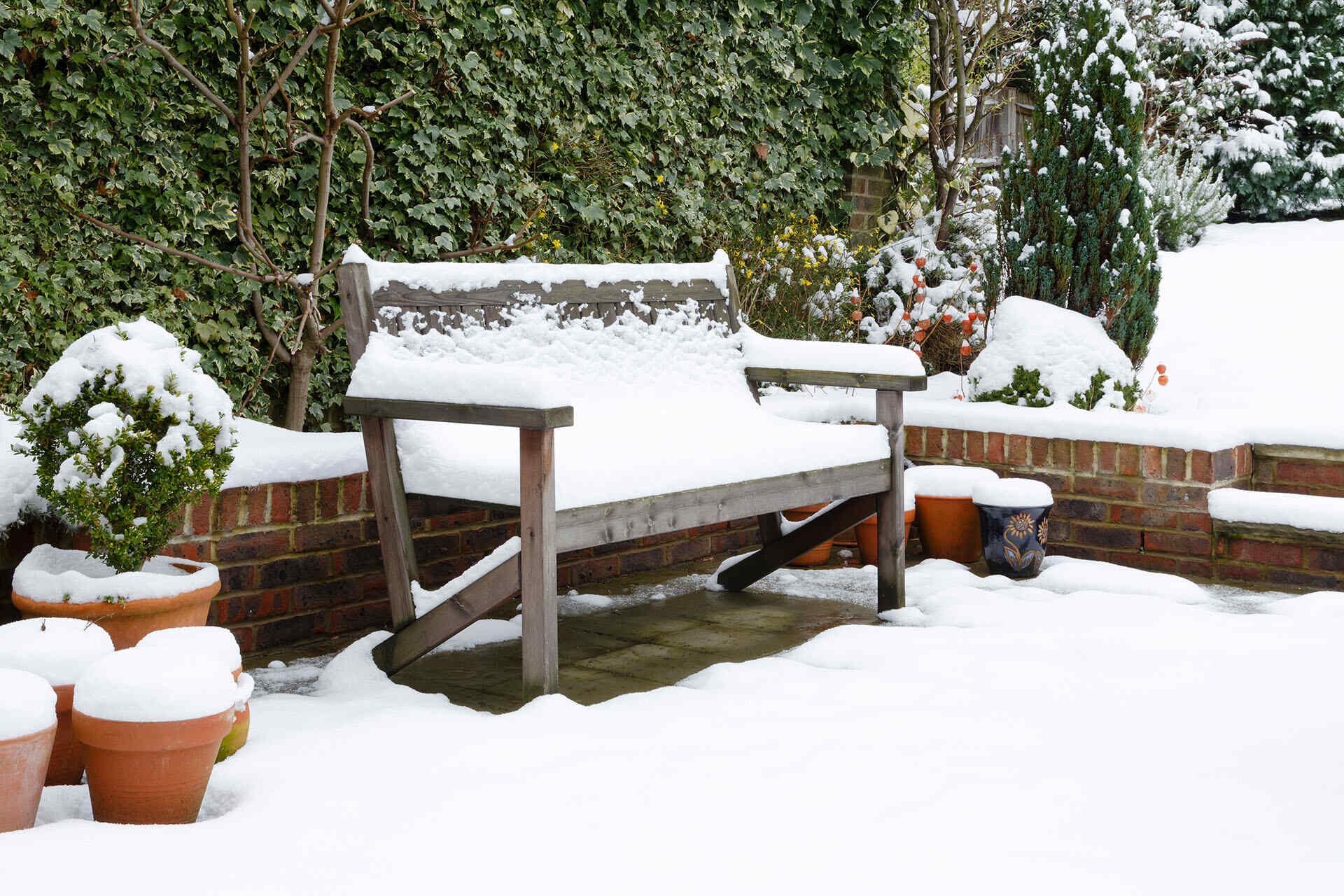
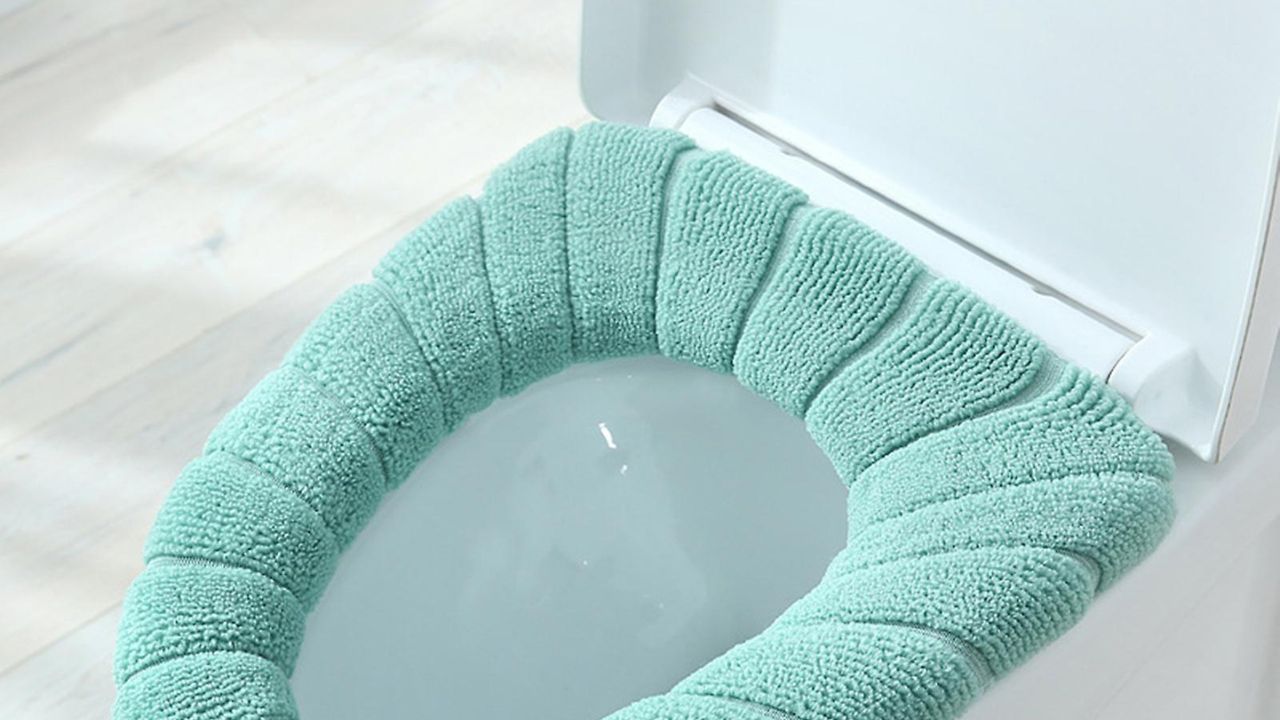
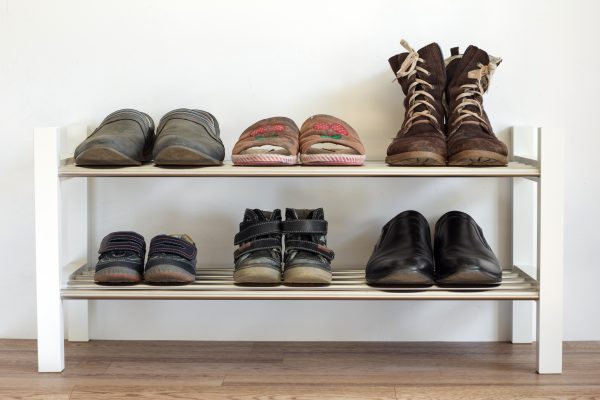

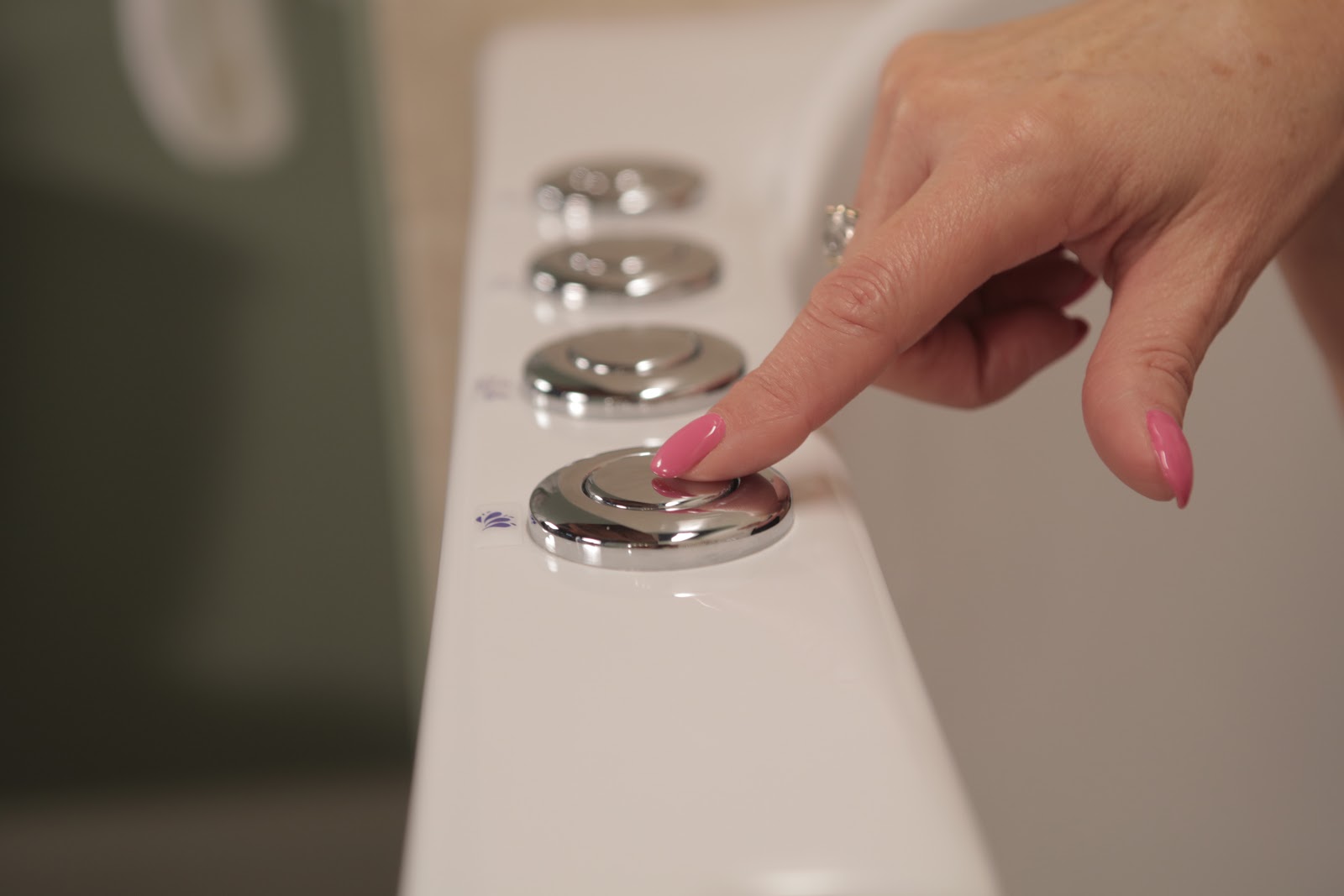
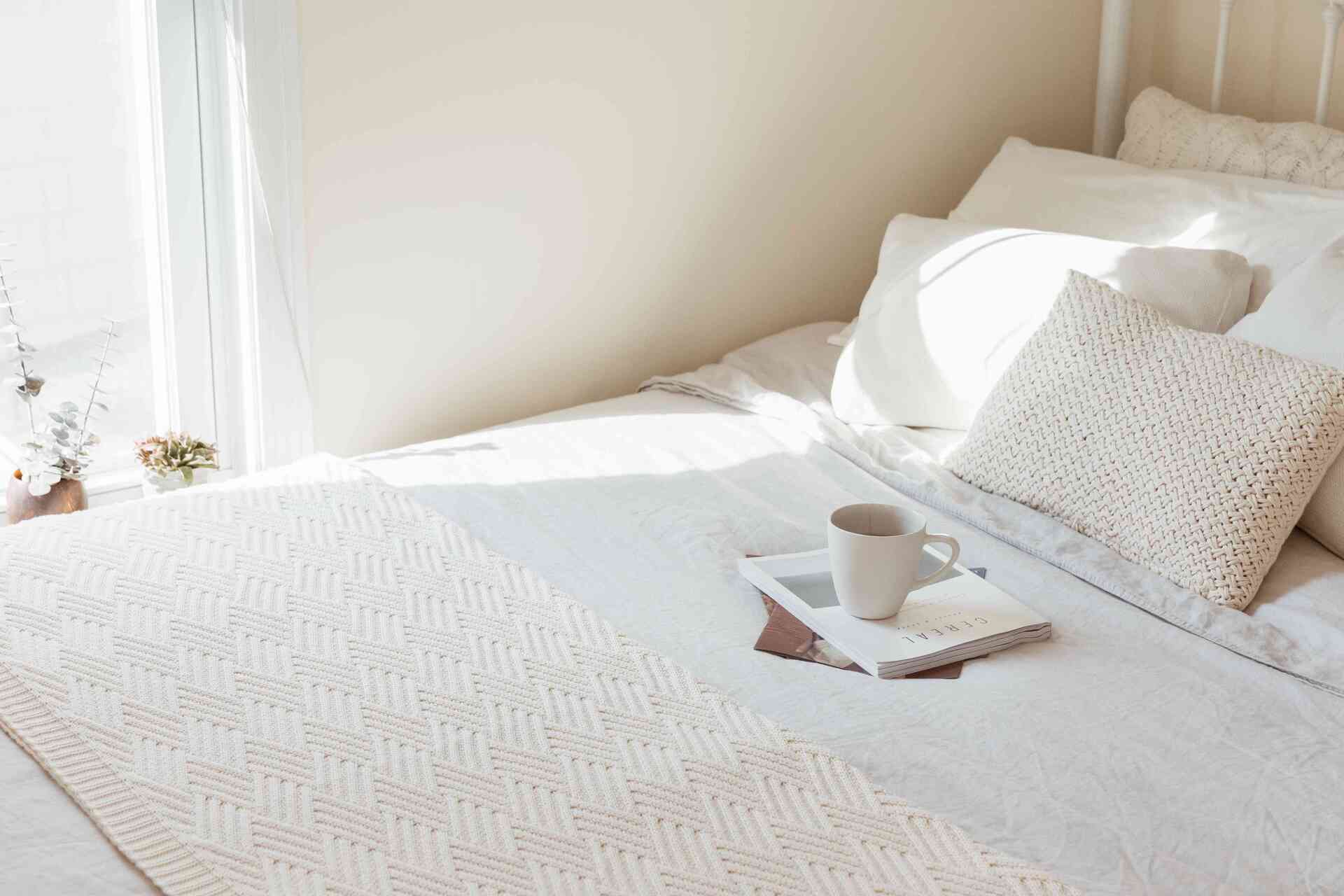

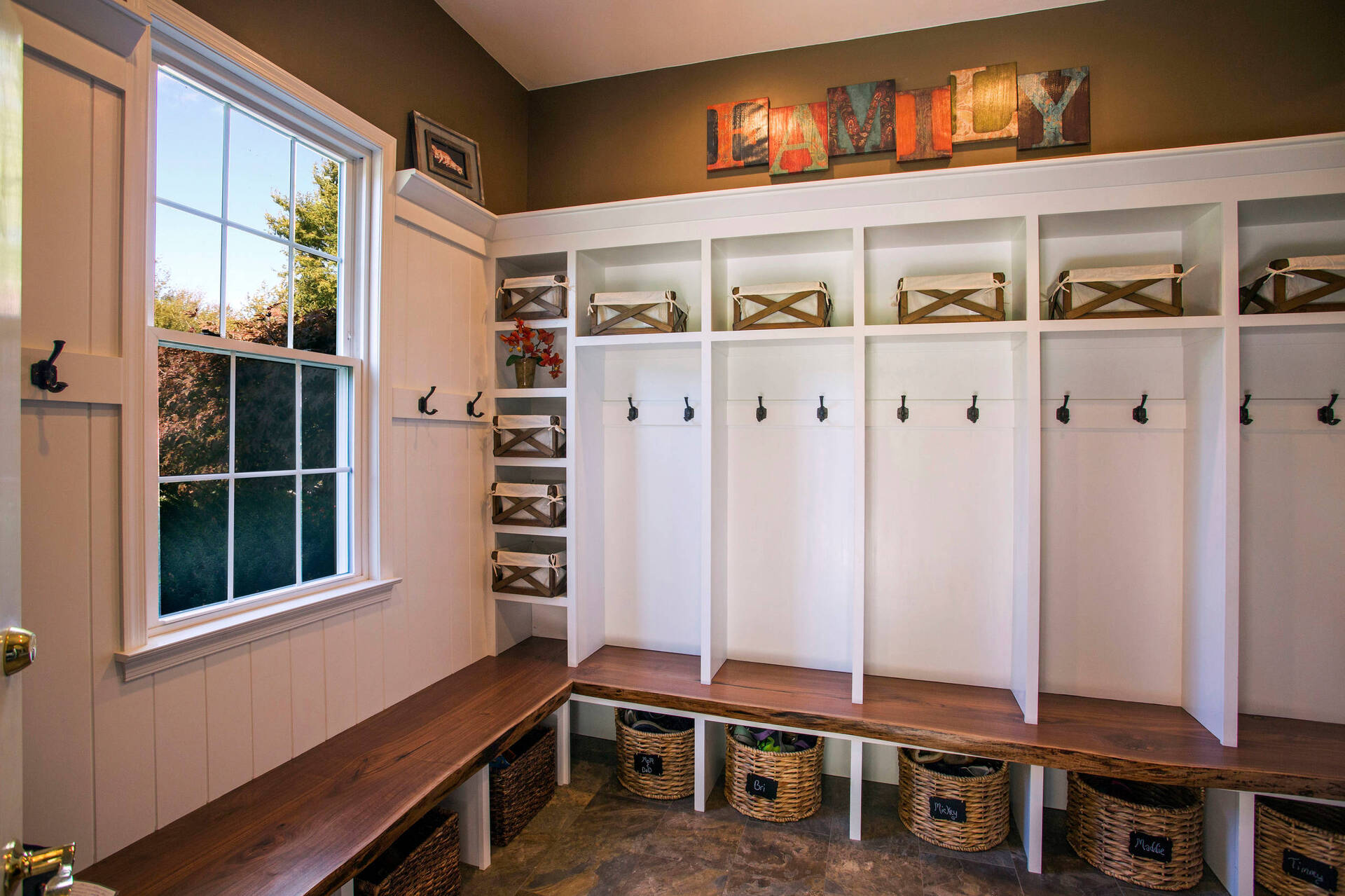
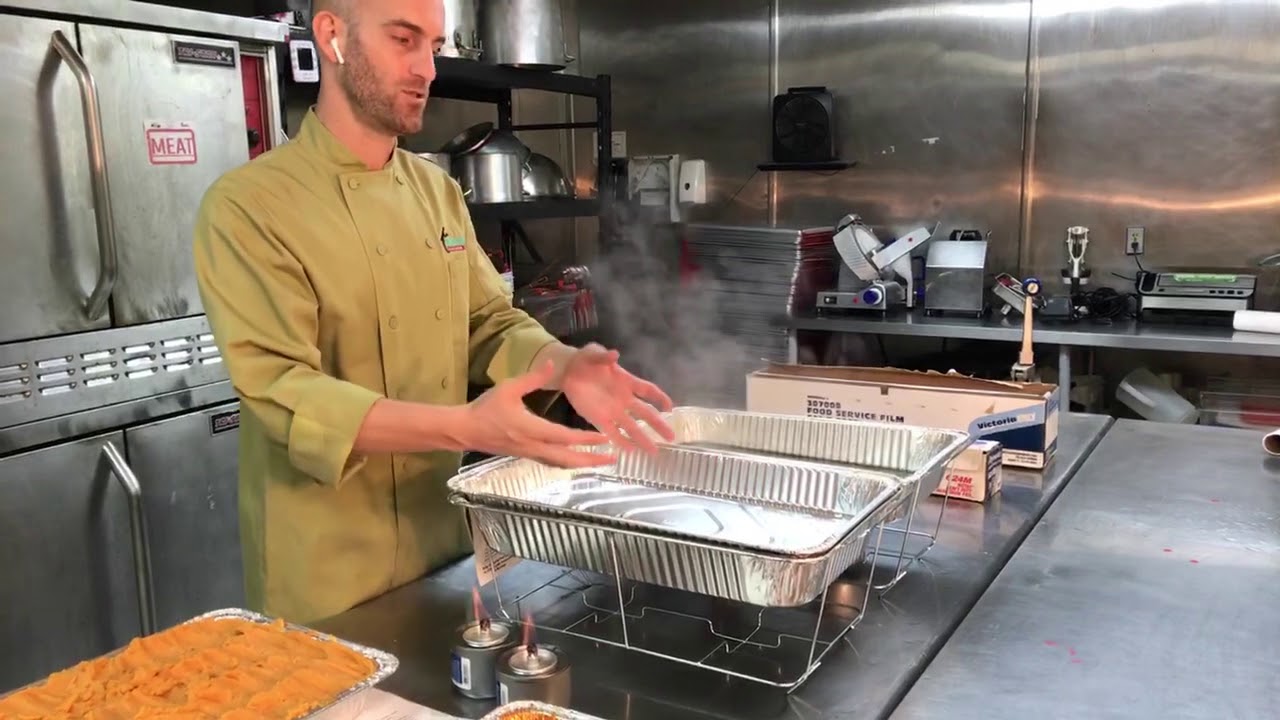

0 thoughts on “How To Keep Floor Warm In Winter”